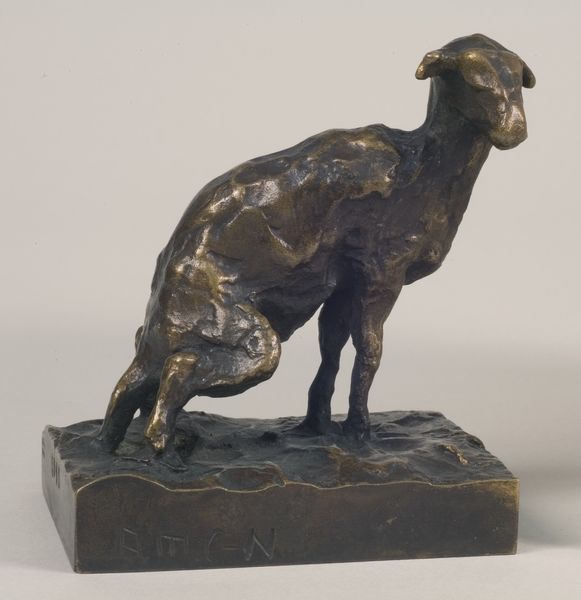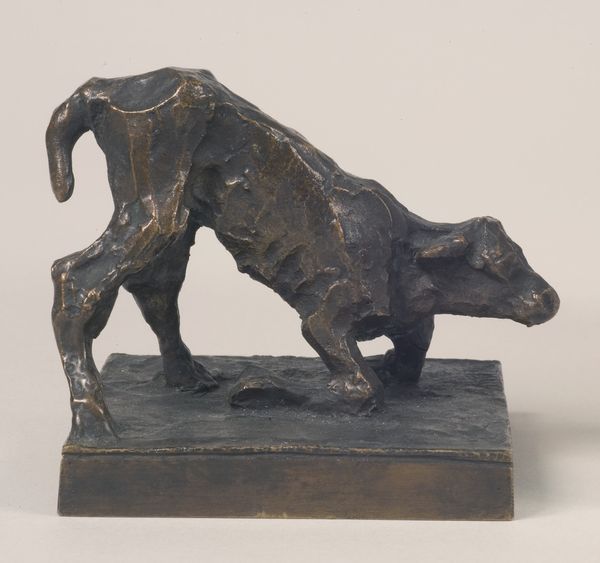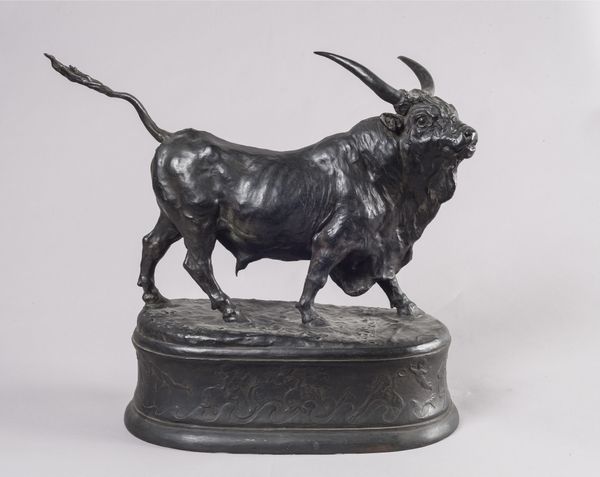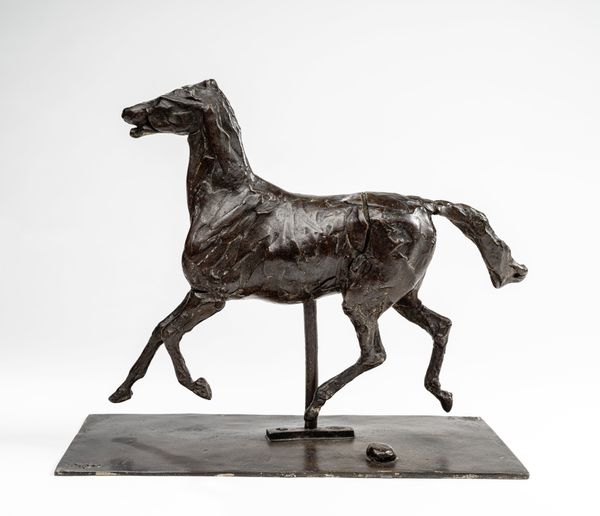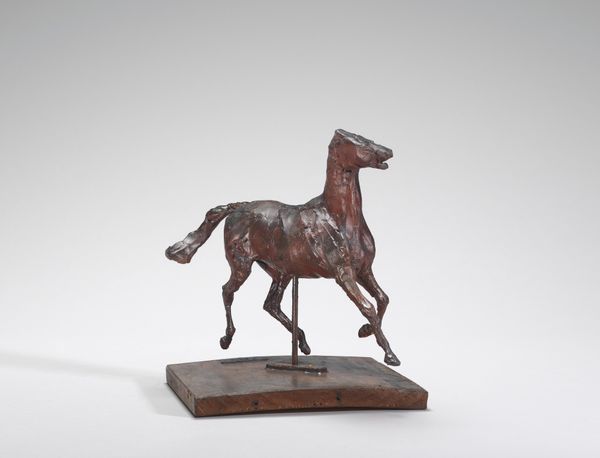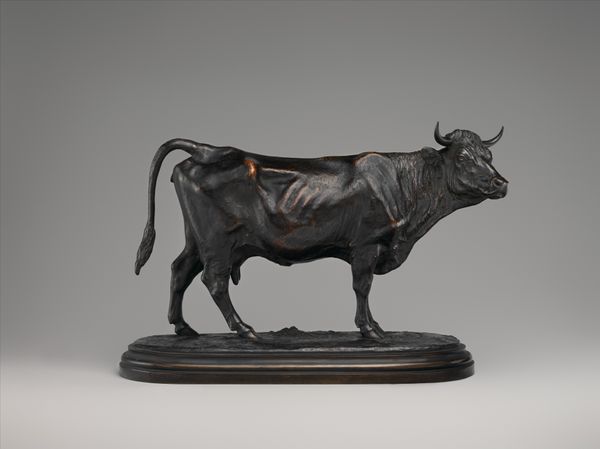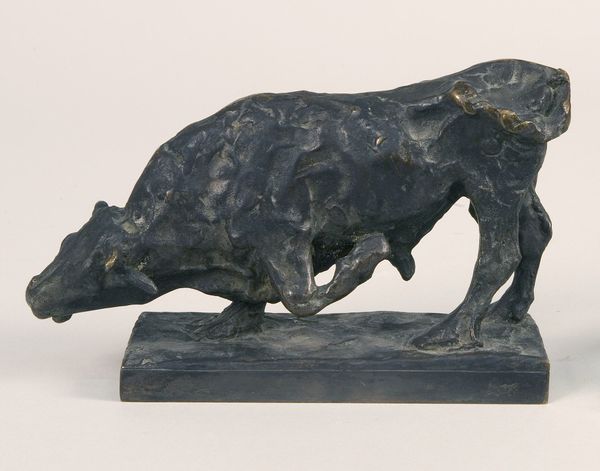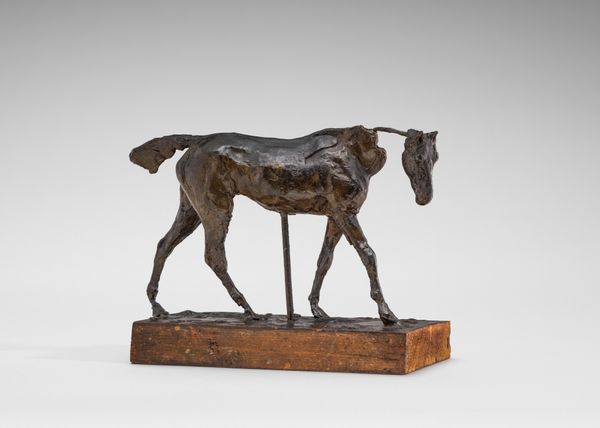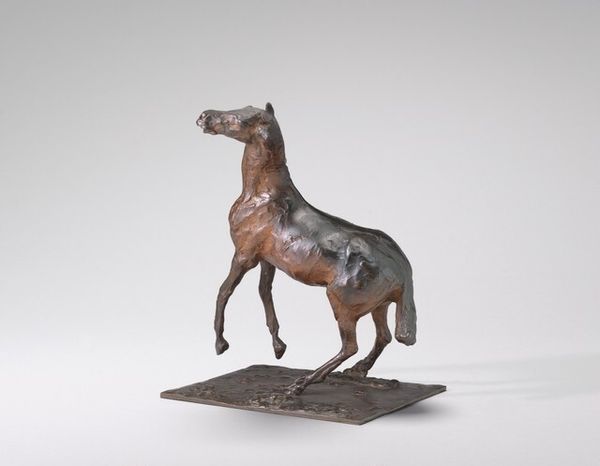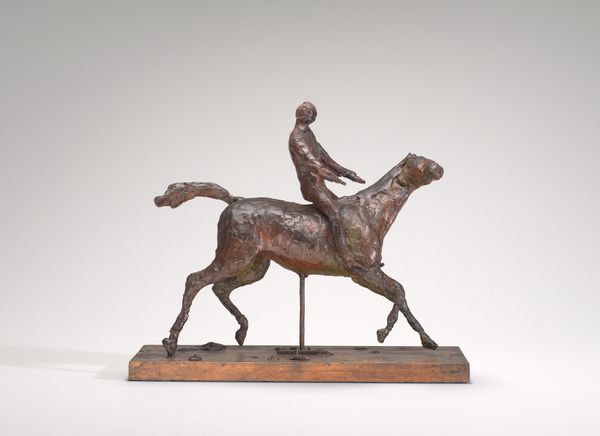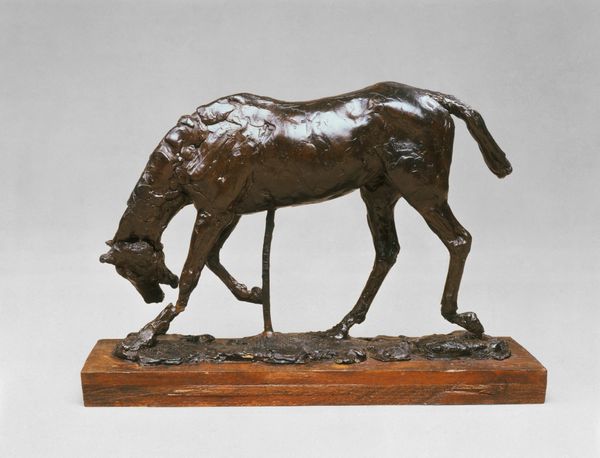
bronze, sculpture
#
animal
#
sculpture
#
bronze
#
figuration
#
sculpture
Dimensions: 13 cm (height) x 15.9 cm (width) x 6.8 cm (depth) (Netto)
Curator: The bronze sculpture before us is Anne Marie Carl Nielsen's "Moorland Sheep," crafted between 1901 and 1905. It is part of the collection at the SMK, the Statens Museum for Kunst. Editor: I'm immediately struck by the sense of forward motion and also this remarkable roughness—it doesn't try to prettify the animal at all. Curator: Precisely. Considering its historical moment, early 20th century, it engages with notions of labor and the rural existence then central to Denmark's cultural and economic identity. Nielsen herself broke many barriers as a woman sculptor—how might that perspective shaped this image? Editor: Well, the sheep appears rather undomesticated, untamed. Looking at similar animal figures, particularly depictions of livestock throughout art history, so many seem posed to convey an idea of idealized farm life and bounty, but this feels more about an animal's reality in harsh conditions, it doesn't romanticize pastoral life. I think of sheep as symbolizing innocence, but here I see something more primal. Curator: It is vital to remember that Nielsen deeply knew the animal world. The roughness you mentioned— it can also be tied to larger trends of artistic truth. What might be construed as imperfection actually carries a greater realism and a stronger emotive quality, don't you think? Her studies in zoology undeniably informed the musculature and carriage rendered here, allowing for commentary that transcended simplistic notions of rural idyll. The piece speaks to a social awareness. Editor: The symbol of a hardy animal, struggling but surviving within demanding landscapes would speak volumes to the Scandinavian mindset then, and arguably even today. Bronze lends this enduring, permanent quality, making the representation more powerful than, say, plaster might. In art historical traditions, certain animals, the lion, or bull, communicate ideas of power. Do you see the symbolism working on similar levels here? Curator: Interesting. I believe that Nielsen is using the image of the animal as metaphor, less of imperial authority, and rather speaking to ideas about resilience of those working on the margins. This unassuming sculpture becomes quite subversive when considered through the lens of socio-political commentary. Editor: The conversation around symbolic weight combined with social commentary adds further depths to appreciating this striking figure! Curator: Absolutely, and contextual awareness enables us to unlock it.
Comments
No comments
Be the first to comment and join the conversation on the ultimate creative platform.
